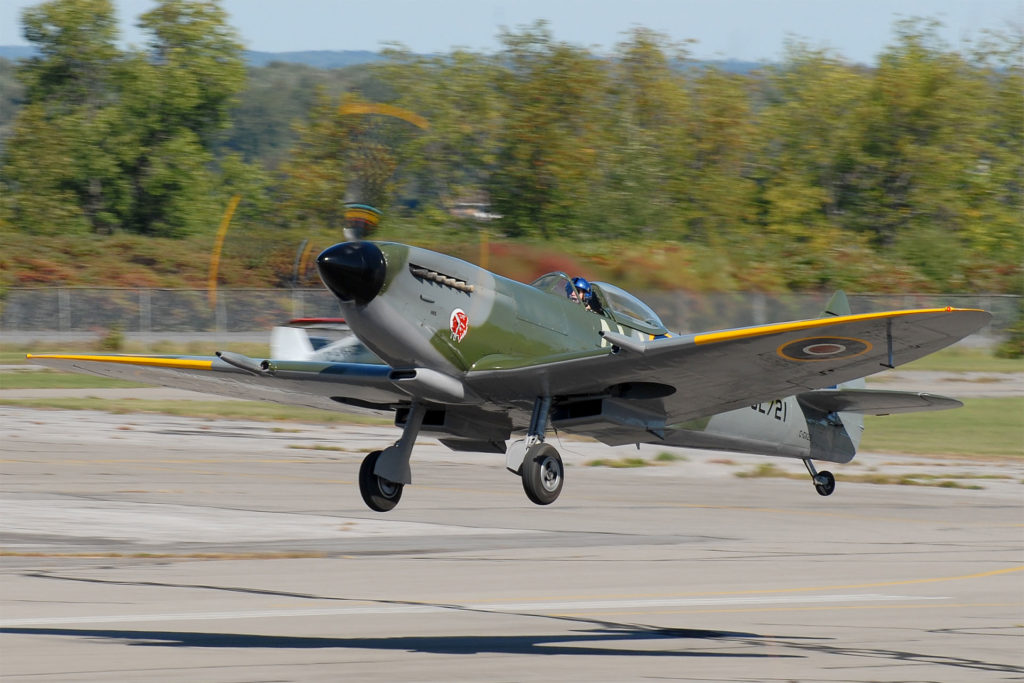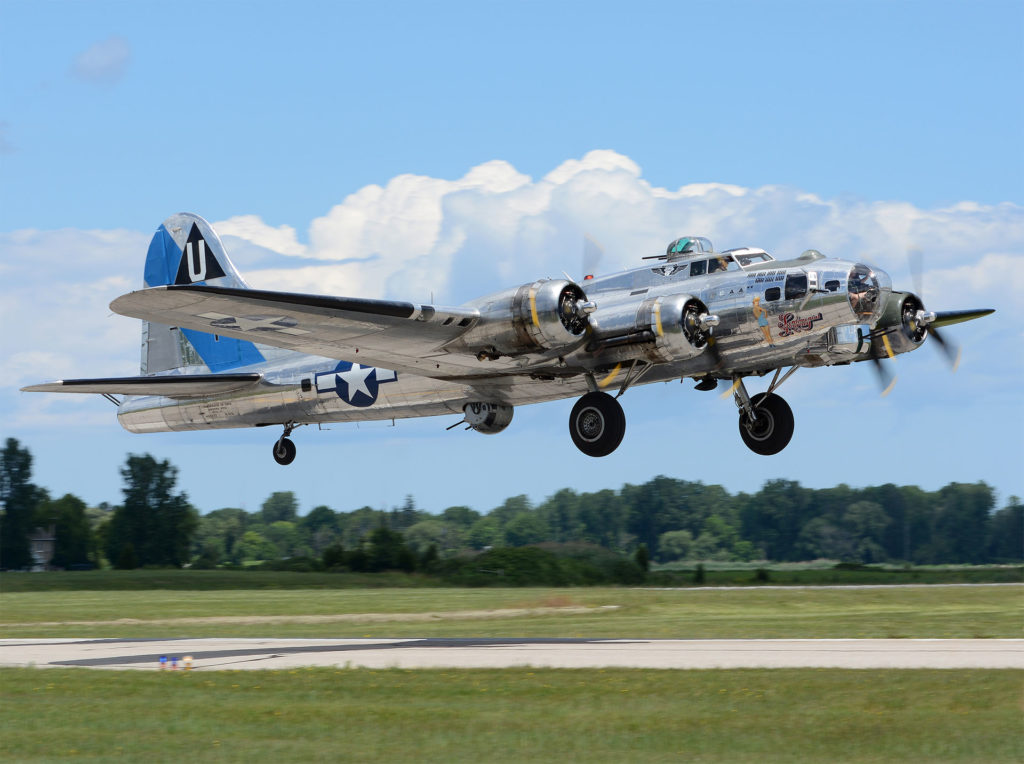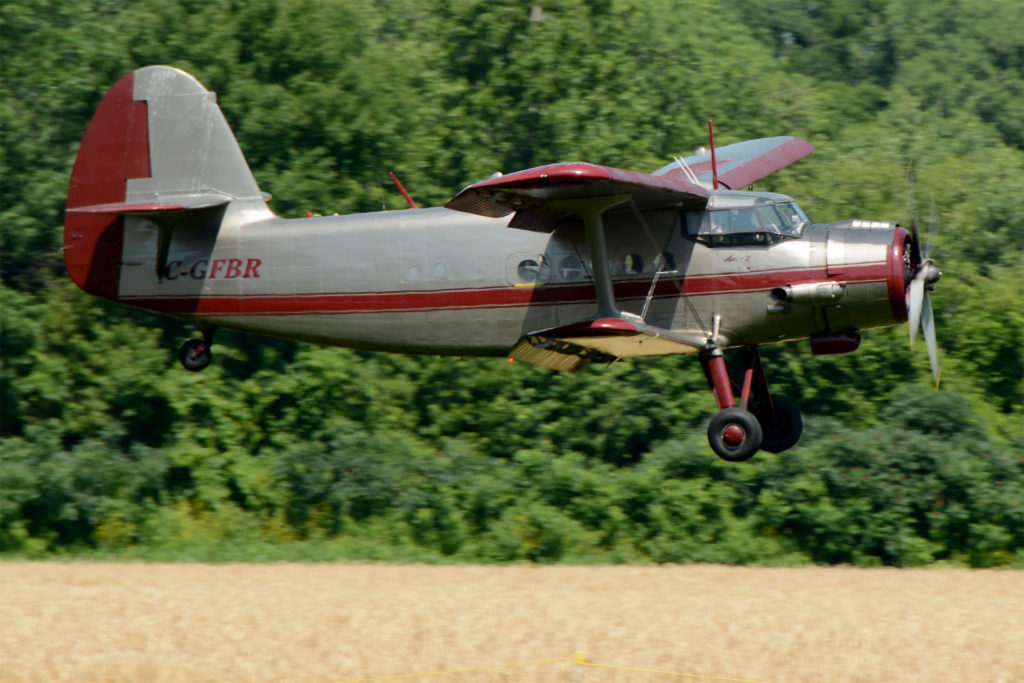Estimated reading time 12 minutes, 56 seconds.
I fondly recall my favourite flight instructor. A good instructor is friendly and approachable, makes their expectations clear, and is patient while the student makes natural beginner’s errors. This particular instructor combined all of those qualities. It was my trusty old 1946 Aeronca 7AC Champ. Sometimes, if you’re listening in just the right way, an airplane will make clear exactly what it expects of you.

It’s a funny thing about flying, but if it’s too easy, it’s no fun. All airplanes have a personality, but some are real characters. Pilots enthuse about airplanes that make demands upon their skills, rewarding them as they learn and adapt; the pilot typically responding to the airplane’s mechanical feedback the way a dog responds to being scratched behind its ears. Every pilot can close their eyes and recall a moment when the sensation of controlling an airplane approached the sublime. Therein lies the charm of flying taildraggers.
Dragging Your What?!
Pardon the vernacular, but a “taildragger,” is typically defined as any airplane with the tailwheel installed at the proper end. It used to be termed “conventional undercarriage,” because the earliest “aeroplane” designs had wee, tepid engines necessitating huge, slow-turning propellers. Long undercarriage legs near the front were required to keep the propeller out of the dirt. As we will see, this configuration has some charming disadvantages.
As technology progresses, we tend to acquire new skills at the expense of old ones. The unfortunate, er, I mean inevitable, advent of modern nosewheel designs has gradually led to the widespread loss of taildragger handling skills among pilots. Consequently, most modern pilots cast unfamiliar glances at the quaint old taildragger types, but have likely never flown one. That’s a shame.
I don’t mean to write a breathless article about how cool taildraggers are, or to imply the myriad subtle ways in which taildragger pilots have been secretly anointed with aeronautical pixie dust. OK, maybe a bit. I’ll admit my bias if I may be permitted to explain.
Perhaps owing to their diverse missions, or maybe their typical vintage, there is an alluring diversity in the taildragger gene pool. Personalities vary widely among the taildragger types, which is much of the measure of their ability to delight. Learning to tackle their quirks and limitations can only do good things for a pilot’s skills.

A tailwheel always adds a dash of spice to handling. In flight, the undercarriage type is transparent, of course, but taxi, takeoff and landing require some new instincts. Some types are mild enough to tolerate a beginner. The taildraggers from the golden age of general aviation — the Aeroncas, Pipers, Taylorcraft, and so on — served as primary trainers for a generation of pilots. Others, like the feisty aerobatic Pitts Special, are so spicy that a part of every landing has me wishing someone else were doing it.
Don’t Try This at Home
Handling a tailwheel airplane amounts to a simple task: keep the tail behind you! Alas, several factors conspire to make this challenging. To illustrate why, let’s notionally race two shopping carts down a long, steep hill. Climb aboard one and have a friend climb into the other — perhaps not one who owes you money — because while you will be sensibly forward-facing, your friend will guide his shopping cart downhill backwards.
It’s not difficult to envision the mayhem that will ensue. The forward-facing shopping cart will naturally track straight down the hill. Putting the swivelling wheels in the back — behind the centre of gravity (CG) — changes the dynamic entirely, giving your friend a livelier ride in the aft-facing cart. Somewhere down the hill he will develop an appreciation for tailwheel flying.
What went wrong? Whether the tires are installed on a shopping cart or an airplane, any minor imperfections in the surface induce tiny slips and skids where the rubber meets the road, so to speak. The natural irregularities in any surface induce more drag on the tires that are unable to swivel in response. Additional drag behind the CG is stabilizing — think of a dart — but the opposite is quickly destabilizing, which your aft-facing friend experiences as a sudden desire for the shopping cart to chase its own tail. In the case of an airplane, the effect is moderated by several factors, principally the stabilizing effect of the vertical stabilizer and rudder.

The Yaw Problem
Big, heavy taildraggers, such as the Boeing B-17 or Antonov AN-2, tend to wander away from a selected heading quite slowly, which seems an advantage until you discover that they also correct slowly. One might say the same thing about the iconic de Havilland Tiger Moth; an airplane with handling so horrible that overcoming it always proved euphorically satisfying. You can almost feel it teaching you to land it! Even this represents progress. An even more archaic design, the pre-First World War Bleriot XI, combined very lively directional instability with a nearly ineffective rudder.
The net effect of instability is to make the pilot busy, relegating the pedals to a balancing act akin to holding up a hockey stick on a fingertip. It’s the sort of trick that proves very satisfying after a bit of practice, and once one discovers that frequent, small corrections made early are always preferable to heroic efforts delayed. Taildraggers are intolerant of inattention, because once a critical amount of swerve has developed, even heroic footwork won’t prevent the dreaded “ground loop.” A ground loop is what backwards shopping carts do, except that it often breaks airplanes. As for ground loops, there are those pilots who have, and those who will. For the record, I have.
Another, perhaps extreme, case of yaw instability was the Messerschmitt Bf 109 fighter. Its narrow and canted undercarriage made it very sensitive to anything but the most gentle handling — particularly on takeoff lest it quickly induce uncontrollable “wobbles” leading to loss of heading control. The worst-case outcome of such behaviour was a fighter laying upside down beside the runway with the canopy in the dirt and fuel trickling up the pilot’s back. They were all single-seaters. One taught oneself to fly it. Clearly, some taildraggers are more challenging than others.

The Pitch Problem
Directional instability is only half the problem. Among the disadvantages of a taildragger is nothing prevents it from falling over onto its nose. Gentle braking is the rule, but a rough surface, or an inadvertent trickle of power, can induce a nose-over in some types. When it happens, it happens fast, and most taildragger pilots will recall moments when they almost pole-vaulted over their main wheels.
The airplane’s designer helpfully installed the main wheels ahead of the CG, but as with all things in engineering, compromises are required. The further forward the wheels with respect to the CG, the more tolerant the design against nose-over. Alas, such nose-over resistance comes at a price. With the wheels too far ahead of the CG, ground contact upon landing tends to induce an increase in angle of attack, which tosses the airplane back into the air. Such events require the unusual instinct of freezing the stick, lest one induce a series of increasingly frantic bounces along the runway. Such geometry almost necessitates a three-point landing in some designs. Any attempt to wheel-land a Piper J-3 Cub with its rubber bungee undercarriage on pavement serves as ample demonstration of this bounce-inducing effect.
An opposite extreme case is the Supermarine Spitfire, where the wings were too thin to house the undercarriage internally, and where every troy ounce of weight was crucial — the result was pitiably short undercarriage legs. Consequently, with the weight of its big engine up front, the Spitfire is very close to nose-over when at rest. One thought dominates while taxiing: keep the tail on the ground with full aft stick and idle thrust. Brakes are best avoided if possible. The only positive aspect of this geometry is that the Spitfire is only minimally bounce-inducing if dropped a bit abruptly into the grass — at least by taildragger standards.

Trying Not to Brake It
The first lesson of tailwheel flying is often, “Stay off the brakes!” If only it were so easy. Many taildraggers transform into lively weather vanes when taxiing in gusty crosswinds, and judicious use of the brakes is often necessary. Since brakes are a component of steering, and where the risk of excessive braking can be expensive, smooth and predictable brake response is especially important.
Alas, one finds some whacky braking mechanisms among taildraggers. De Havilland types, such as the Chipmunk, have a hand-operated mechanical brake lever on the side of the cockpit under the throttle. Many British military types mount the brake lever on the stick grip, activating the brakes with compressed air. Perhaps the most confounded of all designs are the heel brakes on many older general aviation types, which are actuated by wee, separate floor-mounted tabs situated adjacent to the rudder pedals. Any pilot proficient with heel brakes is qualified to open a dance studio. It’s probably safe to venture that landing a light taildragger in a gusty crosswind is the only instance in aviation where success is determined by the dexterity of one’s feet! Understandably, thick, clunky boots have no place in such cockpits. The purists fly only in soft sneakers.
Finally, allow me to pass along a lesson that a wayward Waco Taperwing biplane once taught me: be very careful of any taildragger where someone has “improved” the brakes. The only thing worse than having too little braking is having too much.
Use The Force, Luke
A charming trait in common with nearly all taildraggers is terrible forward field of view from the three-point attitude. Those designed for the bush, such as De Havilland Canada’s Beavers and Otters, make a point of preserving the critical view ahead into the rugged tundra. Such comforts come at the expense of drag and performance since a well streamlined pilot is hidden behind the engine where he can’t see.

The lovely Beechcraft Staggerwing, for example, is utterly blind in the three-point attitude, making the pilot reliant upon peripheral vision and Yoda force to steer. The extreme example, Charles Lindbergh’s Spirit of St. Louis, had a fuel tank in lieu of a front windscreen. Oddly, the only time one sees the runway in such a machine is as you’re departing from it!
In lieu of such luxuries as actually seeing where one is going, taxiing necessitates continuous S-turns to periodically swing the nose aside to survey the view ahead. Consequent rumours that taildragger pilots are unable to taxi in a straight line are thus only partially true.
The Enduring Value of Challenge
What does it mean that a pilot qualified to command a modern Boeing airliner is likely unable to handle a 1940s vintage Boeing Stearman primary trainer? It means that times change, and that modern airplanes are demanding in different ways. Nevertheless, there will be days when success in handling a taildragger depends upon your vision, coordination, dexterity and reflexes. You can’t say that of many airplane types anymore, but those that do have one thing in common: they’re fun.


I NEED TO GET AN EMAIL ADDRESS FOR ERIC DUMIGAN. I RECENTLY WAS GIVEN SOME BEAUTIFUL PHOTOS TAKEN BY ERIC FEATURING OUR TIGER MOTH C-FDGC AND i WOULD LIKE TO PURCHASE SOME PRINTS. CAN YOU PLEASE FORWARD THIS TO HIM?